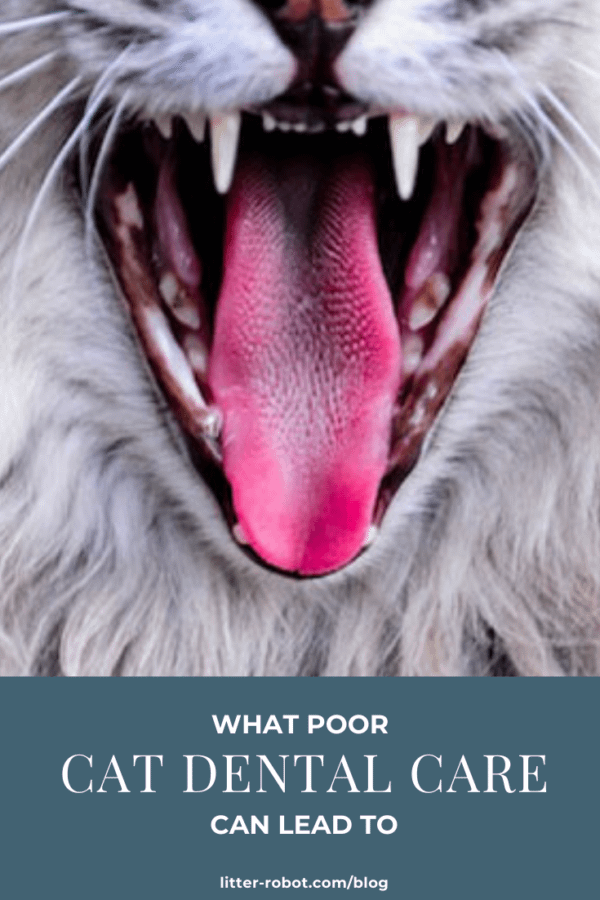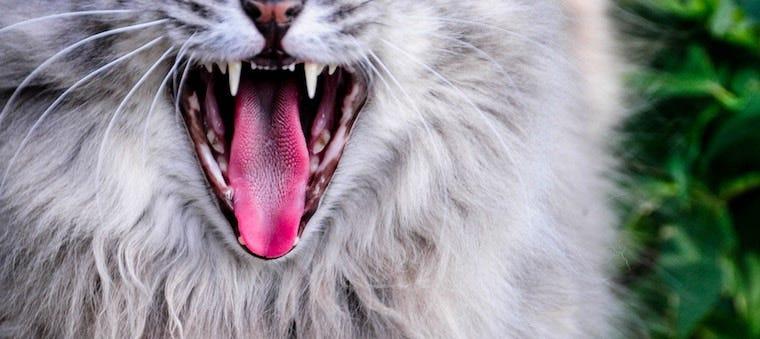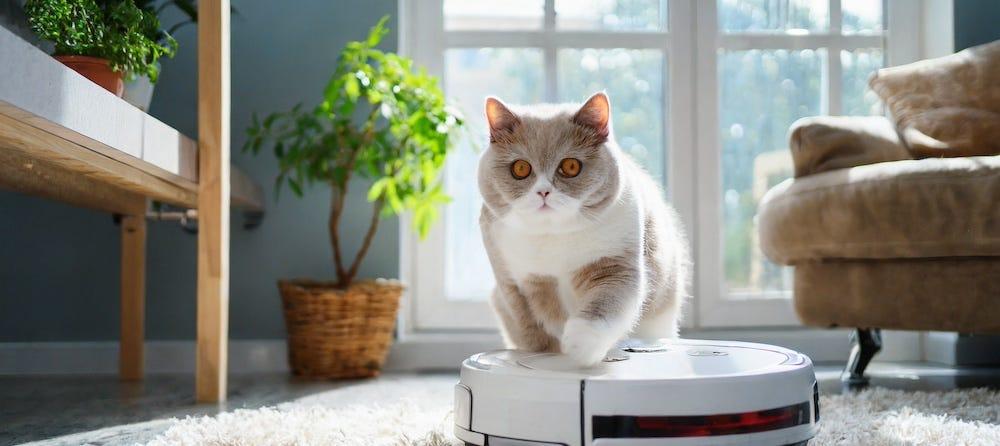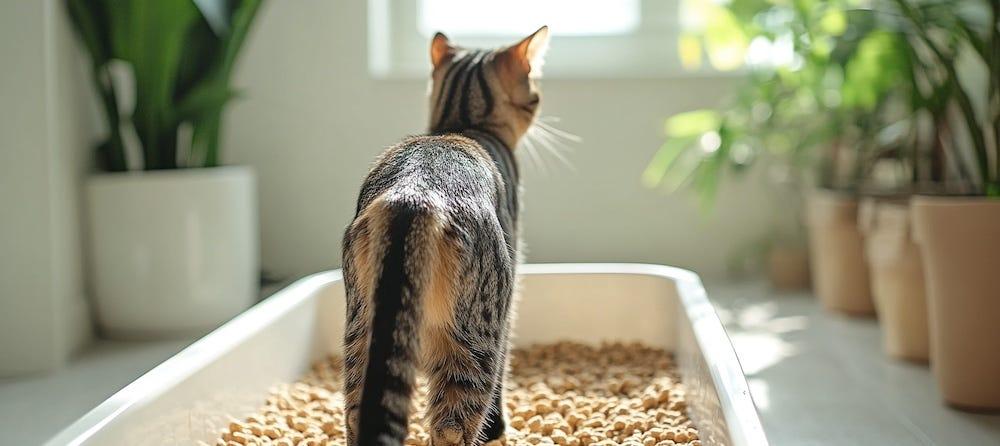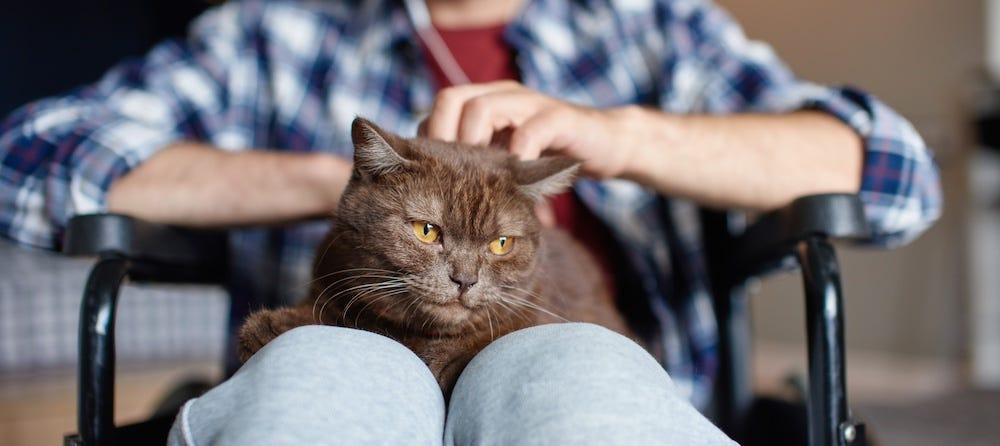February is Pet Dental Health Month. Dental care is probably one of the few aspects of your cat’s health that you don’t often consider. Learn why poor cat dental care can lead to serious consequences for your kitty’s health—including gum disease, gingivitis, tooth loss, and even infections to the heart, lungs, kidneys, and liver.
The importance of teeth cleaning
Whether you brush your cat’s teeth yourself or get a little help from the vet, cat dental care is an important part of your feline’s overall health. Make sure your cat has a regular dental exam where your vet can determine if a teeth cleaning is necessary.
Left unattended, your cat’s teeth (just like your own) quickly accumulate plaque and tartar buildup. And that buildup leads to the proliferation and spread of oral bacteria.
What are some of the consequences of plaque and tartar buildup and the spread of bacteria?
Gum disease in cats
Gum disease, also known as dental disease or periodontal disease, is “the progressive inflammation of the supporting structures surrounding the teeth” (Vetstreet.com). It’s estimated that more than 70 percent of cats have gum disease by the time they turn 3. (Eek!)
In order to diagnose gum disease in cats, veterinarians will look for signs of plaque and tartar buildup on your cat’s teeth. However, a thorough dental examination under anesthesia along with dental X-rays is the best way for your vet to determine how mild to severe the disease is.
As a cat parent, you can do your part to observe signs and symptoms of gum disease. These include bad breath; red, bleeding, or receding gums; drooling (often tinged with blood); difficulty chewing food and/or loss of appetite; pawing at the mouth; nasal discharge; facial swelling; loose or missing teeth; and looking unkempt or failing to groom.
Gingivitis in cats
Gingivitis, or the inflammation of the gums, is one of the earliest stages of gum disease. It occurs when minerals in your cat’s saliva bond with the plaque and tartar buildup on his teeth. This creates bacteria that works its way under the gums.
The most common signs of gingivitis in cats include bad breath, as well as red or swollen gums, especially on the side of the gum facing the inner cheeks.
The good news is, gingivitis in cats is reversible with the right care. A veterinarian can typically treat mild gingivitis with a thorough dental cleaning. This should include cleaning the area under the gums, followed by dental polishing. If your vet believes the gingivitis is caused by overcrowded teeth, he or she may decide to remove some of your cat’s baby teeth.
Tooth decay and tooth loss
The more advanced stage of gum disease in cats begins when bacteria under the gums destroys the supporting tissue around the teeth. The process of tooth decay can’t be reversed as long as the affected teeth remain. Your vet will need to perform dental procedures such as applying antibiotics to the gums, a root canal, or tooth extraction. Left untreated, advanced gum disease can lead to painful tooth resorption, or when teeth sink back into the diseased and receding gums until the body eventually reabsorbs the tooth.
Which cats are more susceptible to gum disease, gingivitis, and tooth loss?
Any cat can be susceptible to gum disease and its consequences with poor cat dental care. Some purebreds, such as Abyssianians, are also more predisposed to getting gum disease.
Unfortunately, cats with feline immunodeficiency virus (FIV) or feline leukemia (FeLV) are more likely to develop inflammation of the body. This makes them more at risk for developing gingivitis and tooth decay. Cats with diabetes or autoimmune diseases may also be more likely to contract gum disease.
Infections to the heart, liver, kidneys, and lungs
A surprising and perhaps more serious consequence of poor cat dental care? It turns out that bacteria associated with dental disease can travel in the bloodstream to infect your cat’s heart, liver, kidneys, and lungs. As Vetstreet.com points out, this is not just applicable to cats and dogs: “Among humans, periodontal disease has been correlated with shorter life spans.”
So what is good cat dental care?
Knowing now what the consequences of poor cat dental care can be, what can you do to make sure your cat’s oral health is in tip-top shape? Again, we recommend that you talk to your vet about regular teeth cleanings as well as learn how to brush your cat’s teeth at home. Your vet may also recommend mouth rinse solutions and special diets or cat treats that help minimize plaque and tartar buildup.
With a little bit of effort now, you can keep your cat healthier in the long run!
Cover photo by Toni Reed on Unsplash
